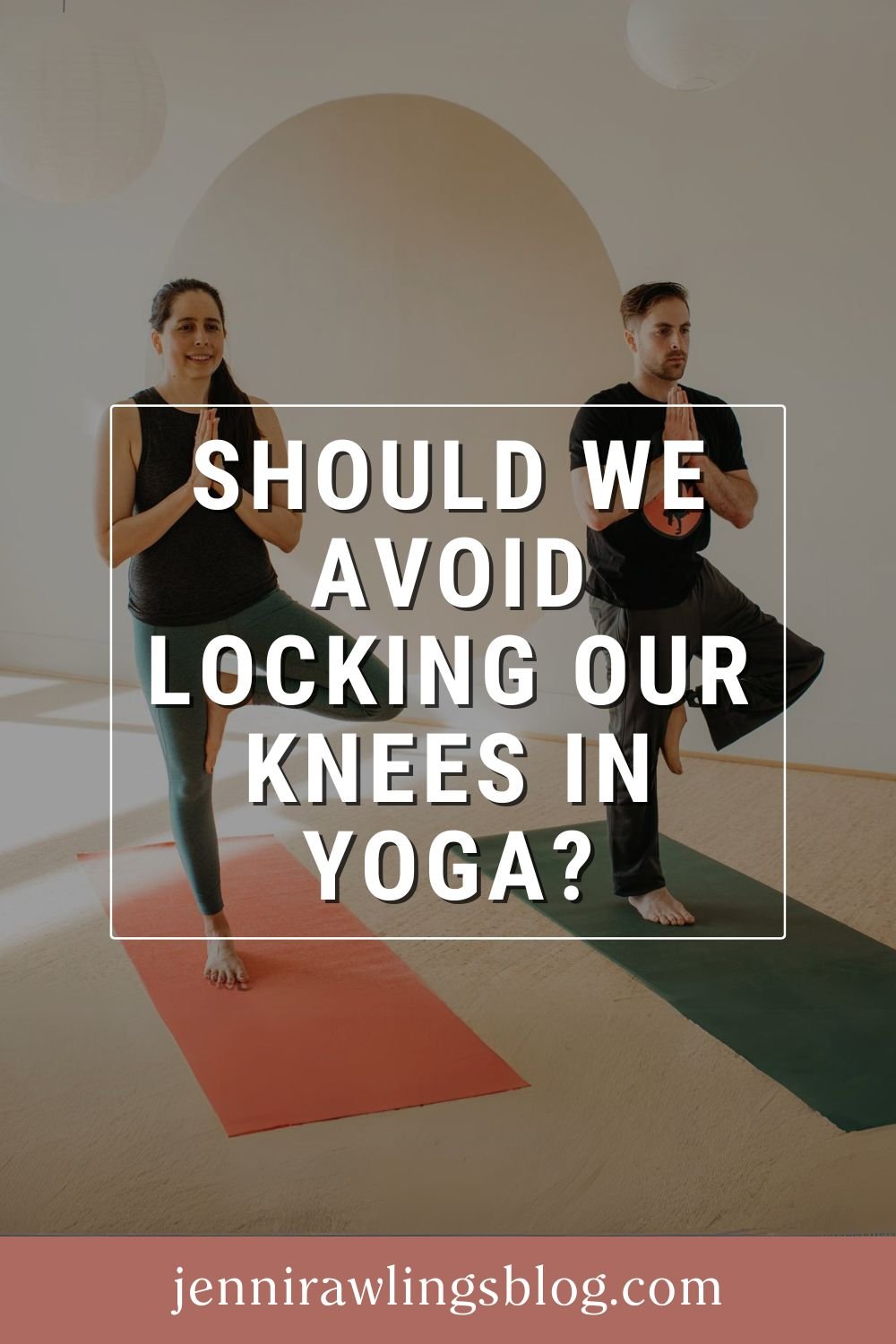Should We Avoid Locking Our Knees in Yoga?
This blog post was first sent to Jenni’s email list as an email newsletter. Sign up for the JRY email newsletter here!
It’s common to hear the instruction in yoga class to “microbend your knees” to avoid “locking” them.
Is it helpful or important to avoid locking the knees? Let’s examine this common claim!
(BTW, we discuss this topic in more depth – as well as a ton of other common yoga claims about the knees – in episode 46 of the Yoga Meets Movement Science podcast! Tune into the episode for the full scoop! But for now, let’s take a closer look at this “locking the knees” question…)
Here’s a visual demonstration of the difference between a “microbend” and “locked knees” in tadasana (mountain pose):
In yoga, knee hyperextension tends to get a bad rap. But it’s actually normal and healthy for the human knee to extend backward into some hyperextension!
The normal range of motion of knee hyperextension is 5-10°.
In biomechanics, a “locked knee” doesn’t have a negative connotation – it’s simply a knee positioned at its end range of hyperextension.
The knee joint moves into this hyperextension via the “screw home mechanism,” in which the tibia externally rotates, the femur internally rotates, and the cruciate ligaments tighten and stabilize the knee, thereby “locking” the joint.
A “terminal knee extension” exercise
This position of knee hyperextension is also called “terminal knee extension” (TKE) in biomechanics. Along with the screw home mechanism, it’s an important joint action for healthy knee movement.
In fact, the ability to “lock the knee” is considered so important that rehab for knee injuries often includes exercises specifically designed to regain this knee hyperextension!
They’re called “terminal knee extension exercises” and they involve actively pushing into knee hyperextension and *stretching the back of the knee*. (Something often fearmongered about in yoga!)
“Locking the knee” is also a normal and healthy way that we stabilize our knees – especially if we’ll be standing for a while, such as when we wait in a long line or stand at a concert.
Standing in terminal knee extension is a built-in strategy for optimizing movement efficiency. When we’re in this position, our quadriceps muscles (the muscles on the front of our thighs) don’t have to actively work to hold us up. This is a good thing because it allows us to stand without using as much metabolic energy. Otherwise our quadriceps would fatigue, and remaining in our standing position would become increasingly uncomfortable and unbearable!
As with any movement, certain individuals may want to avoid knee hyperextension if it’s a sensitized position for them or if it’s otherwise unadvisable.
We also may occasionally want to cue a slight knee bend for the purposes of muscular engagement in specific asanas.
But should we teach microbending the knee as the default “correct alignment” for everyone in all standing poses because locking the knee is injurious? 🤔
The evidence doesn’t support this approach!
Our friend Dr. Andrew McGonigle recently covered this topic, as well. Here's an eloquent excerpt:
“It’s fine to use the cue ‘Micro-bend your knees,’ but avoid adding that this is to protect the knee joint because in most cases that is untrue and adds to the harmful and incorrect narrative that our knees are fragile.”
(Thanks, Andrew!)
Listen to the full scoop on locking the knees in yoga, plus so many other yoga knee myths, in episode 46 of our podcast – see you there!








